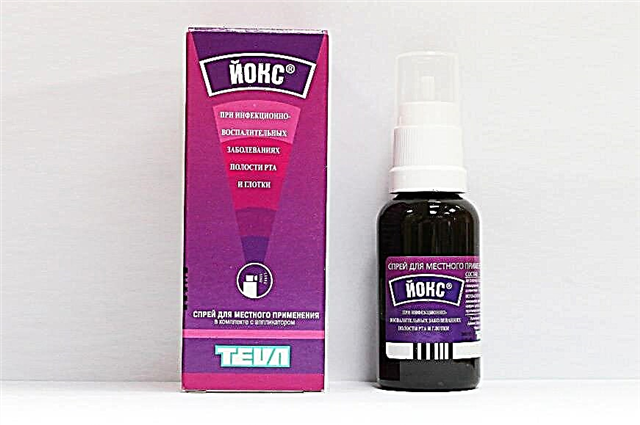
The recovery and rehabilitation period after a cesarean section requires a special approach. Substantial restrictions are imposed on the woman's physical activity, on sex life, on planning the next pregnancy. Nutrition and care of the seams require special attention. There are also limitations with regard to hygiene procedures, in particular, water. In this article we will tell you how and when a woman can take a bath, swim in the sea or river.
Hygiene issues
Most of the post-cesarean women, when discharged from the maternity hospital, are so happy with the consciousness of an early return to their family that they simply forget to ask their doctor about the organization of hygiene after surgical delivery. These questions usually arise before her in full growth only later, after discharge.

Hygiene is very important in the postpartum period. Properly organized hygiene measures will help to avoid infection of postoperative wounds, will contribute to a faster recovery of the body after severe stress, which, of course, is a cesarean section.
But the wrong approach to hygiene is fraught with the development of complications in the postpartum woman, and therefore the issue of water procedures, as an invariable component of the hygiene of a modern woman, is quite acute.
Caring for the postoperative suture before and some time after removing the suture material means treating it with brilliant green from possible bacterial infection, as well as moderate drying with hydrogen peroxide and regular dressing changes.
That is why it is not recommended to wet the seam until it is completely healed.

A complete tightening of the external scar on the skin is usually completed 3 weeks after the operation. If the early postoperative period proceeded with complications, then in this case it is quite possible for a longer healing of the suture, complications in the form of proliferation of connective tissue, the formation of hernias, fistulas, keloid scar, divergence of part of the sutures. In this case, the prohibition on the contact of the postoperative scar zone with water is extended individually.
If there are no complications, the suture heals well, for the first three weeks after the operation a woman should not take a bath or bathe in the shower. The upper part of the body should be wiped off with water, the external genitals should be gently washed away, being careful not to get water into the vagina and the seam area.
During this period, douching is also contraindicated. The healing process of internal sutures on the uterus takes even longer than the process of scarring outside, and therefore it is necessary to exclude any possibility of tap water and bacteria or viruses entering the genital tract with it.

A woman should wash the external genital organs two to three times a day, change the sanitary napkins every 3 hours. It is important to maintain cleanliness and hygiene during the separation of postpartum discharge (lochia).
When can I shower?
It is recommended to bathe in the shower after a cesarean section not earlier than the healing of the outer suture occurs. According to experts, with an uncomplicated rehabilitation period, this takes about three weeks. Taking a shower right after stitches are removed is not the best solution. After the suture that ties the edges of the wound is removed, it takes about two more weeks for the outer scar to be considered complete.

Therefore, it is recommended to take a shower no earlier than 5-6 weeks after the operation. The water should be warm (not hot or cold), a contrast shower, useful for improving muscle tone and restoring physical fitness after childbirth, should be practiced preferably not earlier than 3-4 months after the operation.
When taking a shower, a woman should avoid directing a stream of tap water to the external genitals, to the area of the postoperative scar. It is considered optimal at first to cover the seam on the skin with a surgical bandage and fix it on top with a special waterproof plaster. After bathing, the bandage is removed.

Do not use a hard washcloth, much less rub it on your stomach and groin.
It must be remembered that tap water is by no means as pure as it seems. It is inhabited by masses of microorganisms, not all of which are harmless. And if we consider that a woman's immunity is pretty much undermined after the operation, the consequences of improper organization of water procedures can be rather sad.
Bathing
It is recommended to take a bath after a cesarean section not earlier than two prerequisites are met: the outer suture will heal and postpartum discharge (lochia) will end. This discharge is completely natural and normal - this is how the uterus is cleared of blood that has entered the cavity during the separation of the placenta. Allocations are accompanied by the process of involution of the uterus - its reverse development, reduction to its previous physiological size.

The first days after the operation, the discharge is bloody, bright, then blood clots appear in them, after 5-6 days there is serous fluid in the lochia, and after 2 weeks - yellowish mucus. When the discharge becomes normal, characteristic of a woman before pregnancy, this is a conditioned signal that the uterine cavity is clean.
This usually happens 6–8 weeks after surgery. But there may be a later cessation of postpartum discharge. At the end of the discharge, they talk about the primary healing of the internal scar on the uterus. Since that time, sexual activity with barrier contraception (condoms) is allowed, and it is also possible, at the request of the woman, to take baths.
It is important at first not to lie in the bath for hours, but to limit yourself to a 7-10-minute procedure. Hot water should be avoided so as not to provoke blood flow to the pelvic organs and not cause bleeding.

Bathhouse, sauna
Baths and saunas are very useful inventions of mankind that strengthen health and improve blood circulation. But after the operation, they are unacceptable precisely because of the high temperatures. A woman should not overheat, as this can cause an increase in postpartum discharge, bleeding. Washing in the bath is strictly prohibited.
A woman who has recently given birth through a cesarean section can go to the bathhouse and sauna without harm to her health only when the inner seam on the uterus is sufficiently strong. Usually, these procedures are allowed at the same time as lifting the ban on abdominal exercises. Six months after the operation, a visit to the bathhouse, sauna will be safe and will bring a lot of benefits to a woman for beauty and health.

Swimming pool visit
Swimming and water aerobics are considered some of the earliest permitted physical activities after a caesarean section. But it should be remembered that in the public pool, where the woman comes, there are even more bacteria and microorganisms than in tap water. In addition, the water in the public pool is highly chlorinated, which is an additional irritant factor.
A visit to the pool will be safe and useful only after 3 months have passed since the operative delivery. An important factor is the absence of postoperative complications. Therefore, before you start visiting the pool, you should definitely consult your doctor.

Open bodies of water
I want to swim in the lake, river and sea, especially if it is hot summer outside. But it should be understood that the likelihood of infection after surgery when swimming in an open water body is higher than in a public pool. Any open body of water is a natural habitat for numerous microorganisms. At the same time, stagnant water bodies (ponds, lakes) are more dangerous than the sea, in the salty environment of which not all microbes and viruses survive.
Rest at the sea, freshwater and smaller reservoirs should be postponed to a later time.
In the first 3-4 months after the operation, such rest, as well as being on the beach in the open sun, if a cesarean section was performed, are contraindicated.

General rules
Water procedures after a cesarean section will require a woman to follow certain rules.
- Do not use toilet soap with rich perfumery fragrances, it dries the skin very much, especially in intimate places. Choose either regular baby soaps or special intimate hygiene products. Pay attention to the composition. It is desirable that the composition contains lactic acid.

- When washing, first of all, you should wash the external genitals with movements from the pubis to the anus. Then they start washing the anus. This procedure is important so that opportunistic and pathogenic microorganisms from the intestines and feces do not get into the genital tract.
- Sponges, washcloths, and other bathing devices should not be used when watering the genitals.

- Until the stitches on the abdomen are removed, it is advisable to wash away after each urination. In order not to upset the balance of the vaginal microflora, you should not use toilet soap every time; it is enough to wash with soap only twice a day - in the morning and in the evening. The rest of the washings are best done without detergents at all.
- After the ban on the bath, the bath will be lifted, do not rush to use abrasive products for the abdomen - peeling can be applied, but a little later. It is also better to refrain from Charcot's shower.
- If you have a beach vacation, and only 2-3 months have passed after the cesarean section, you must definitely visit a doctor, get tested and ask him about the opportunity to swim and relax in the pond. If there are no complications, the obstetrician-gynecologist can resolve.

For more information on how to care for your suture after a cesarean section, see the following video.



